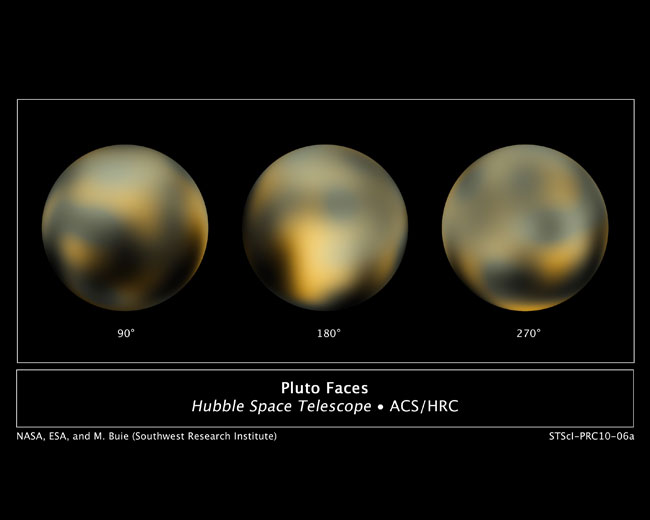
A NASA spacecraft's path to Pluto this summer should be relatively smooth and safe, a new and improved portrait of the dwarf planet's moons suggests.
The New Horizons probe will make the first-ever flyby of Pluto on July 14, cruising within 7,800 miles (12,500 kilometers) of the frigid world's surface. Last month, New Horizons began hunting for rings, undiscovered moons and other hazards that could potentially trip the spacecraft up in the home stretch of its historic journey.
Mission team members have said they don't expect to find anything that will pose a serious problem. And now a new study into the characteristics and orbital dynamics of Pluto's four tiny known moons — Nix, Hydra, Kerberos and Styx — has New Horizons' handlers feeling even better about their chances. (Pluto's other known satellite, Charon, is much larger and is considered to comprise half of a Pluto-Charon "binary planet.") [Photos of Pluto and Its Moons]
"Right now, the dynamics of the system make it likely that we probably won't have moons that are close enough to the spacecraft to [pose] a problem," said New Horizons science team member John Spencer, of the Southwest Research Institute in Boulder, Colorado, who is leading the hazard search.
"The system is quite full," Spencer said Wednesday (June 3) during a news briefing discussing the Pluto moon discovery. "It's hard to just put additional moons in there in random locations, because they probably wouldn't be stable — they would be thrown out — and there's a limited number of additional places that you could put moons, most of which tend not to be very close to where the spacecraft is flying through the system."
The $700 million New Horizons mission launched in January 2006, tasked with returning the first up-close looks at Pluto, which has remained mysterious since its 1930 discovery.
New Horizons left the vicinity of Earth at a higher velocity than any other spacecraft, and it's currently zooming along at 32,550 mph (52,380 km/h) relative to the sun — so fast that an encounter with even a tiny piece of debris could cause serious damage.
Get the Space.com Newsletter
Breaking space news, the latest updates on rocket launches, skywatching events and more!
Hence the Pluto hazard search. Undetected moons don't pose much of a collision risk in themselves, but they could be shedding dust and other material that New Horizons would be best served to avoid, Spencer said.
If the hazard hunt does turn up something problematic, mission team members could divert New Horizons to one of three alternate trajectories and/or rotate its high-gain antenna forward, using the dish as a shield.
"We don't want to do that willy-nilly, because that would reduce the amount of science that we could gather during the close approach," Spencer said of the antenna strategy. "So we would only intend to do that if we really thought there was a significant chance of some danger."

The time of greatest risk for New Horizons will likely come about two to three hours before closest approach, when the probe will be nearest to the orbits of Nix, Hydra, Kerberos and Styx, Spencer said. Charon is very good at clearing out debris, so regions very close to Pluto and Charon should be relatively safe, he added.
New Horizons can be diverted from its original flyby path as late as July 1, Spencer said. The team members will keep searching for hazards beyond that date, however, to determine if they want to re-orient the high-gain antenna.
"We're looking for anything we might find, whether we expect it or not," Spencer said.
Follow Mike Wall on Twitter @michaeldwall and Google+. Follow us @Spacedotcom, Facebook or Google+. Originally published on Space.com.
Join our Space Forums to keep talking space on the latest missions, night sky and more! And if you have a news tip, correction or comment, let us know at: community@space.com.

Michael Wall is a Senior Space Writer with Space.com and joined the team in 2010. He primarily covers exoplanets, spaceflight and military space, but has been known to dabble in the space art beat. His book about the search for alien life, "Out There," was published on Nov. 13, 2018. Before becoming a science writer, Michael worked as a herpetologist and wildlife biologist. He has a Ph.D. in evolutionary biology from the University of Sydney, Australia, a bachelor's degree from the University of Arizona, and a graduate certificate in science writing from the University of California, Santa Cruz. To find out what his latest project is, you can follow Michael on Twitter.









